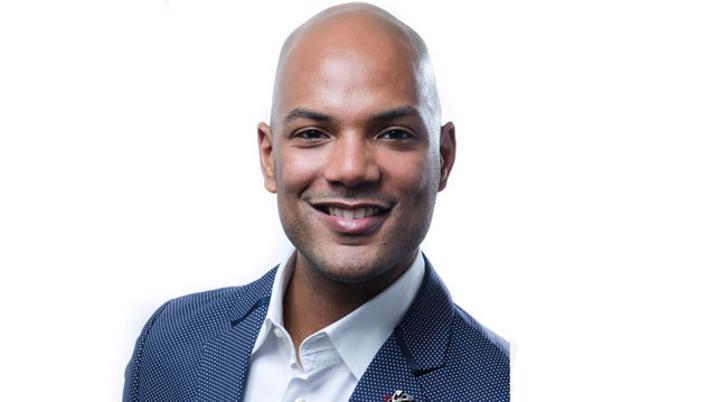
Watching videos on our smartphones has become part of everyday life and when we watch videos on our phones, we almost always hold them vertically. Yet, despite plenty of evidence that smartphone users prefer vertical, most video content is still created for horizontal screens. It is this missed opportunity which News UK is tapping into with the creation of v-Studio, a new digital team dedicated to creating, editing and publishing vertical mobile formats.
The MOVR Mobile Overview Report from December 2014 found that smartphone users hold their phones vertically about 94% of the time. Meanwhile, digital ad platform Unruly’s Mobile Video Survey of 6,000 respondents worldwide, carried out in May 2016, reveals that 56.6% of people in the UK watch more than three videos a week on their mobile and 58% find it annoying to be forced to turn their phone horizontally to watch in full screen. It also finds that over a third of people use rotation lock to keep their phone in vertical mode, leading to the conclusion that: “Viewers naturally consume content vertically”.
The leading social media platforms have been quick to tap into this. Snapchat has led the way with vertical content and ads on its Snapchat Discover channel targeting millennials, while Facebook launched vertical video ads in 2016 and Instagram, best known for its square format, launched its vertical-only ‘Stories’ at the end of last year.
Drawing on the existing expertise of News UK’s commercial division, The Bridge, v-Studio offers brands a portfolio of solutions for creating successful vertical video aimed at smartphone users. Milton Elias, head of mobile and video at News UK explains: “Video has always been a very powerful tool to tell a story. v-Studio is part of a wider mobile strategy; it’s not just about producing original mobile video, it’s also about taking the existing video assets of a brand and repurposing them for a vertical screen to create the best mobile experience possible.”
Smartphones are now a major driver of traffic to News UK’s websites, which readers access via a number of channels, including Snapchat Discover and Apple News. “A lot of the way our audience is consuming content is via their smartphones, so thinking of our mobile audience is a no brainer, it is about how do we cater to that audience?” states Elias.
Delivering vertically
The v-Studio offering has been arranged into seven different formats to make it as easy as possible for brands to choose the right solution off the shelf. The first of these, v-Shoots, provides clients with original video content. Elias explains: “We have a full studio where we produce video in-house and we will produce the vertical version of a video by default because we are thinking about the end user.” Next comes v-Edit, where the team takes an existing video and re-edits it to make it vertical; then there is v-Select, which offers a vertical video gallery and v-Social which delivers vertical video with clear calls to action to link to social media sharing platforms.
The remaining three formats are more bespoke, including v-Drive which takes a vertical video and overlays dynamic content, for example directing the reader to a brand’s nearest store. “This works for brand campaigns where location is obvious to a client brief,” expands Elias, adding: “What we might do in the future for clients who have dynamic pricing, for example an airline or a bookie taking live odds, is to update prices dynamically and overlay them on a video. It allows us to make use of whatever data is available.” If a client already has 360-degree video assets, v-360 enables them to tap into the gyroscope on a reader’s smartphone to move around with the handset. Finally, v-Skin ensures that a video is cut and framed vertically to avoid any black edges.
Top tips
So, what makes a good mobile vertical video? Elias gives a quick masterclass: “The initial concerns are around making sure it is shorter – user sessions tend to be shorter but more frequent throughout the day; vertical – most of the time we are holding our phones vertically; and doesn’t rely on sound – unlike in a TV environment, in a lot of cases sound will be turned off.” The Unruly survey found that three quarters of people will stop watching a video on their smartphones if the sound plays automatically, so ensuring videos can be viewed without sound is a must.
A successful video advertising campaign is not just about the quality of the video but also about ensuring that it targets the right audience and is distributed and shared as widely as possible. This is where Unruly comes in. The digital ad platform which specialises in distributing adverts across social media was acquired by News UK in 2015. “We work closely with them in terms of further distributing content,” says Elias. “For example, if we have created a piece of content, we will work with Unruly to distribute that across the open web and to understand how to best produce, create and tailor video content.”
In its launch phase, v-Studio has recruited internally, working closely with The Bridge, News UK’s strategic content agency based at London Bridge. Elias heads up a small team working on the launch, drawing on wider expertise throughout the company. He reveals: “We have people all over the business, but there’s been a core group of people conceptualising the products in the initial launch phases to make sure we can get it off the ground. We’ve pulled the team internally, but we’re looking also to grow that depending on demand.” He adds: “It’s very early days… we’ve just gone live with our first campaign for Dom Perignon for The Times.” This initial campaign is targeted at a very specific, upmarket Times subscriber base, using the v-Edit format to tailor the brand’s existing video marketing its P2 vintage champagne.
Monopoly campaign
An example of a successful vertical mobile video campaign that News UK ran before the launch of v-Studio, but which has fed into its thinking, is the work it has done for the board games manufacturer Hasbro. “Hasbro was looking to engage people to get them to vote for their favourite Monopoly pieces and for some new ones, so we filmed some mock news stories about Monopoly pieces,” explains Elias. “We ran that across a number of platforms and produced a version for Snapchat which was filmed for a fully vertical platform and ran it on our Snapchat Discover channel. We saw some of the best interaction rates, on a par with what we see editorially. That’s a really good example of how building specifically for the platform gets the best results. Sometimes it’s just as simple as referencing the platform you are running on: ‘We’re interrupting this Snapchat broadcast to inform you…’”
Personalisation is an important part of getting the right video format to the right consumer, according to Elias: “It is about tapping into the existing world of data we have on our users to make sure that we are packaging our audiences appropriately, whether that’s as simple as knowing a user’s location, or looking historically at what kind of content people have been consuming on our sites. What we are looking to do is tailor each campaign we run based on the client brief, our audiences, and what mobile can offer, and to deliver content that’s as relevant as possible.”
Leading the way?
Does he think News UK is leading the way in this field among British publishers? Elias says: “I’m sure I am biased, but I think to be honest we are the first publisher to approach mobile video in a holistic way as we are doing. I’m not aware of any other big publisher who has done this in the same way. We are saying, we can create the content to maintain a good experience for the user, but we are also saying we want to take those assets and further distribute the content; that is something we are enabling. We are conscious that if mobile video ads are going to get better we need to be much more open. The way we’ve approached it is quite unique.”
Having a background on the agency side comes in useful – Elias was head of mobile and tech futures for OMD before joining News UK in January. “A lot of briefs come from our agency partners so we will work closely with them to make sure we produce the content that is most likely going to resonate,” he says, adding: “The process starts with a good brief that we will work on and try to find the best tailored, innovative and audience-centric solution.”
Elias firmly believes the smartphone revolution in the publishing world is set to continue. In the future, he expects to see an increasing amount of video being produced specifically for the vertical mobile format: “I think we’ll see more and more content being produced at scale.” He adds: “We can expect to see much more interactivity; much more seamless integration to drive forward action, whether that’s integrating through m-commerce or between applications.” Another area that really excites him is virtual reality. He points to the Daydream View function included with Google’s new Pixel phone, which with the simple addition of a headset grants users entry to their own virtual reality cinema, where they are at the centre of the action. Elias concludes: “How we tell stories via mobile devices will change and become more immersive. It means storytelling will take on a new dimension.”












